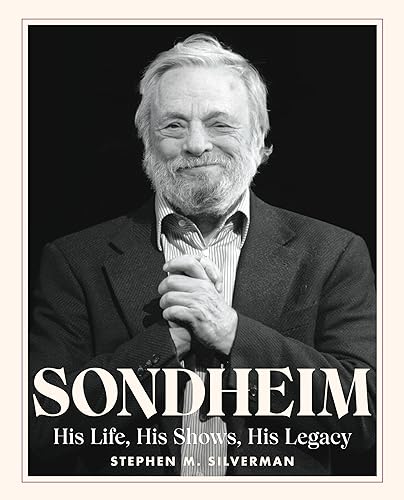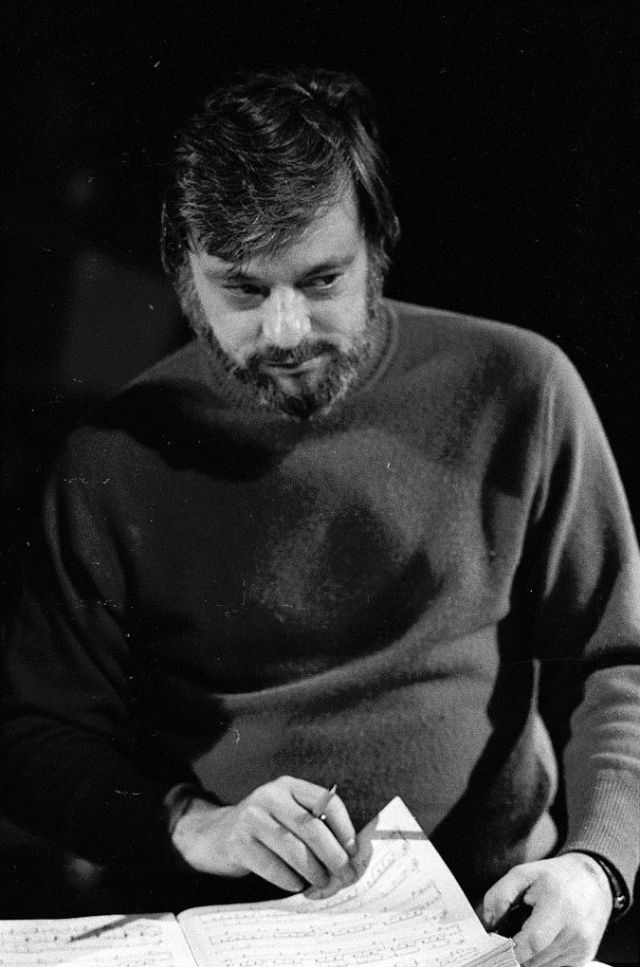 SONDHEIM
SONDHEIM
His Life, His Shows, His Legacy
by Stephen M. Silverman
Black Dog & Leventhal Publishers
292 pages, $35.
THE LYRICS from a song in Stephen Sondheim’s dazzling Broadway show Sunday in the Park with George (1983) include these lines: “Bit by bit,/ Putting it together./ Piece by Piece—/ Only way to make a work of art./ Every moment makes a contribution,/ Every little detail plays a part./ Having just the vision’s no solution,/ Everything depends on execution:/ Putting it together/ That’s what counts.” Stephen M. Silverman’s lush, posthumous coffee table compendium of Sondheim’s career, Sondheim: His Life, His Shows, His Legacy, does exactly that. It puts it all together to make an exhilarating work of art in its own right.
In addition to spilling the tea on Sondheim’s business and personal involvements, the book contains over 200 lavish black-and-white and color photos and enticing sidebars. Silverman is wise to avoid critical analysis. Instead, he provides an encyclopedic textual and visual biography. His chronological documentation of Sondheim’s career becomes an immersive experience, spotlighting minor missteps and major achievements, and making for a glorious singalong.
In his own comprehensive two-volume collection of the songs for his shows (Finishing the Hat and Look, I Made a Hat), Sondheim outlines his three guiding principles for a lyricist: “Content Dictates Form; Less Is More; and God Is in the Details.” He adds the corollary that “all [is]in the service of Clarity.” This precept is exemplified and underscored by Silverman.
Sondheim’s auspicious beginning was as a clapper boy on John Huston’s Beat the Devil at age 23. From there, in a somewhat atypical career move, he was hired as a writer for Topper, a popular 1950s TV sitcom. But it wasn’t long before Sondheim—with the mentoring of Oscar Hammerstein, from whom he learned “how to tell a story” through song and dance (think Oklahoma!)—branched out on his own in a major way, writing the lyrics for West Side Story (1957) while collaborating with three other gay or bisexual men, all of them superstars in their fields of endeavor: Jerome Robbins, Arthur Laurents, and Leonard Bernstein.

Silverman’s template is to present an overview of the struggles and successes of every Sondheim show from inception to out-of-town tryouts to opening night. A chapter titled “Street Fighters” details the back story to West Side Story that turned “a feud between two ghetto street gangs in New York” into an iconic stage and screen phenomenon. By the time Sondheim was almost thirty, Ethel Merman was belting out “Rose’s Turn” from Gypsy, for which Sondheim wrote the lyrics. By forty, he had created Company, for which he wrote both the music and the lyrics, a musical that exposed and excoriated “urban anxieties and the riddles of relationships,” as expressed in the ensemble’s “Side by Side by Side,” Elaine Stritch’s signature showstopper “The Ladies Who Lunch,” and Dean Jones’ anguished anthem “Being Alive.”
The notable litany of hummable tunes (and possible earworms) by Sondheim includes “Broadway Baby,” “I’m Still Here,” “Losing My Mind” (all from the memory play Follies), “Send in the Clowns” (from A Little Night Music), “Not While I’m Around” (from Sweeney Todd), “No One Is Alone,” “Children Will Listen” (from Into the Woods), and “Putting It Together” (from Sunday in the Park With George).
Along with the extensive theater credits, Silverman covers Sondheim’s work in movies. Always the collaborator, he worked with Warren Beatty on Reds and Dick Tracy, winning the Oscar for “Sooner or Later (I Always Get My Man)” as sung by Madonna. Less well-known is his fascination with mysteries: he cowrote the screenplay for the “densely clued, bitchily funny” The Last of Sheila with another murder mystery fan, Anthony Perkins. They wrote two other crime-centered scripts, The Chorus Girl Murder Case and Crime and Variations, neither of which was ever produced.
The scope of Sondheim’s influence is attested by the people he worked with, many of whose careers he made or strongly impacted, among them: Len Cariou, Glynis Johns, Nathan Lane, Angela Lansbury, Jonathan Larson, Lin-Manuel Miranda, Donna Murphy, Mandy Patinkin, Bernadette Peters, Chita Rivera, and Jerome Robbins. Silverman closes his synopsis of Sondheim’s long career with a memorable quote from Audra McDonald. On what would have been his 92nd birthday (March 22, 2022), she wrote that he “taught artists that the uniqueness of oneself and one’s work is something to be revered, encouraged, and celebrated, not only by others, but, most importantly, by one’s own self.” Silverman’s Sondheim is a worthy contribution to the artist’s legacy.
Robert Allen Papinchak, a former university English professor, is an award-winning freelance book critic in the Los Angeles area.






